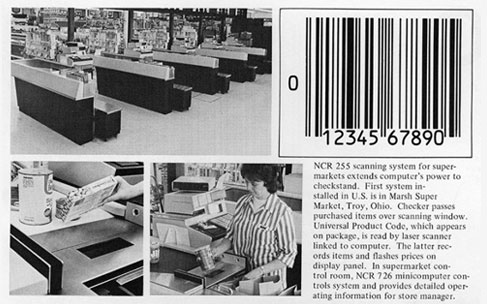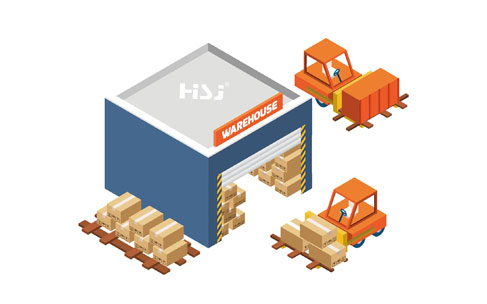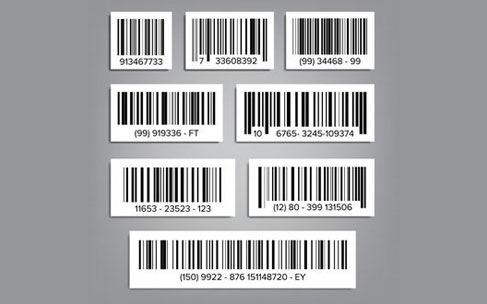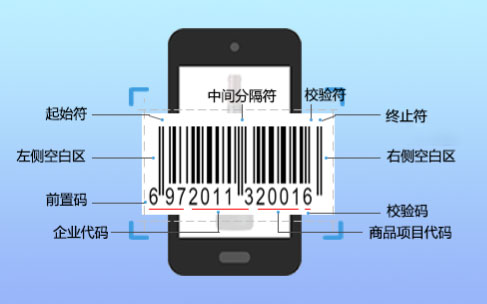Bar codes first appeared in the 1940s, but they are still used and developed. A barcode is a graphical identifier used to represent a series of information. It arranges several black bars and spaces with different widths according to certain coding rules. Ordinary barcodes are patterns of parallel lines, consisting of black and white bars, with very different reflectivity. Since barcodes can indicate the country of production, manufacturer, name, production date, category, date and many other information, they are widely used in commodity circulation, library management, postal management, banking system and many other fields.
In 1948, Bernard Selvo was a graduate student at the Philadelphia Institute of Gas Technology. On one occasion, he overheard the owner of a local supermarket chain imploring the dean to come up with a way to automatically record merchandise sales at the checkout. The dean thought it was strange. But Cerveau and his friend and fellow graduate student Joseph? Wood decided to give it a shot, believing it would make them rich.

First, Servo thought of a way to make ink graphics glow using ultraviolet radiation. But pigments are too expensive, unstable and prone to contamination. Next, he tried to create a blind spot recognition system. However, when the cargo enters the blind spot system, it is very difficult and often damages the cargo.
After months of hard work, Servo decided to use Morse code, a notation system of dots and lines invented by Morse Samuel. Soon, Selwo thought that the dotted lines in the Moore code could be set as thick stripes. This point of view later became the most basic concept of various barcodes.
Due to the technical limitations of the time, barcodes were not widely used. Woodland didn't become an IBM engineer until the 1960s. Instead of giving up his youthful ideas, he kept persuading IBM to invest in barcodes. At that time, lasers and computers had already appeared. The former can easily penetrate the barcode, while the latter can quickly and accurately read, access and process the information in the barcode. Finally, around the end of 1969, IBM assigned George Laurel to study how to make supermarket scanners and labels, and Woodland was involved in the project. Laurel developed a scanner that could read codes digitally. He also used a striped pattern in the barcode instead of the circular pattern Woodland had previously used, which proved unsuitable for printing. After nearly four years of painstaking research, IBM has finally introduced a rectangular barcode that is easy to print and can effectively convey information. This barcode was eventually adopted by the Symbol Selection Committee at the time and named UPC (Uniform Product Code). On June 26, 1974, the world's first barcode scanner was installed at the Marsh supermarket in Troy, Ohio. The first product scanned was a 10-pack of Wrigley Juicy Fruit Gum. This pack of chewing gum is now in the collection of the American Museum of History.
Barcodes first entered China, not for retail, but for the postal system. According to CNKI reports, the earliest paper on barcodes in my country appeared in 1979 and was published in the column of China Post's "Foreign Technology Trends", which introduced barcode technology and its identification system.
Since then, the application of barcodes in China has gradually expanded to libraries, hospitals and commodity retail. In December 1988, with the approval of the State Council, the National Commodity Coding Society was established. During the "Eighth Five-Year Plan" period, the Office of Promotion and Application of Electronic Information System of the State Council also regards barcode technology as one of the ten key promotion and application tasks. In April 1991, China officially joined ean International; in June 1991, the National Barcode Quality Supervision and Inspection Center was established; in May 1991, five national barcode standards were promulgated and implemented; in June 1992, my country's first POS system came out, It marks that my country's barcode has officially entered the stage of use.






